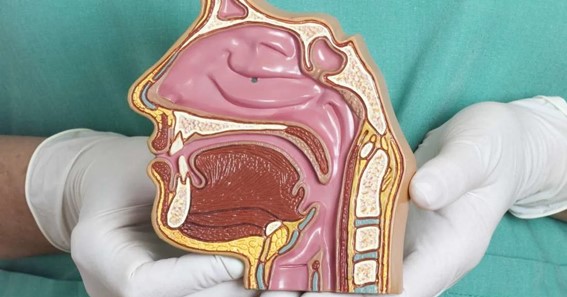Balloon septoplasty is a minimally invasive procedure that opens blocked sinus passages. It allows the sinuses to drain old mucus and pus, reducing symptoms of chronic sinusitis such as headaches and thick post-nasal drip.
It just takes a few minutes, and local anesthetic is used throughout the process.
What is the procedure?
You may have heard about balloon septoplasty for deviated septum or “balloon sinus dilation.” It’s a minimally invasive procedure that offers fast-acting, long-lasting pain relief for patients suffering from chronic nasal sinusitis.
An ENT physician will give you local or general anesthesia for the operation in a hospital or office setting. Then, they will insert a thin tube with a light on the end called an endoscope into your nostrils and sinus cavity.
Next, they will guide a small balloon catheter into your sinuses, then inflate it slowly. It gently expands and restructures your bone next to your sinuses, relieving your symptoms and improving your quality of life.
Often, you will need to keep your nose moist with a saline solution and use corticosteroid nasal sprays after the procedure. It’s also common for patients to have a slight sinus headache or congestion for a day or two following the process.
How is the procedure performed?
A minimally invasive surgery called balloon sinuplasty unblocks sinuses that have become obstructed and restores normal outflow. A skilled otolaryngologist performs it.
The procedure often involves septoplasty, nasal polyp removal, and turbinate reduction. It is also recommended for patients with chronic sinusitis and a deviated septum.
It is performed under local anesthesia and involves using a catheter to guide a balloon through your nasal passages. Once inside the sinus, the balloon is inflated and expanded for several seconds.
The balloon causes microfractures along the sinus openings that will remodel bone, creating new pathways to open and drain the sinuses. Patients with chronic sinusitis and other nasal problems can benefit from this safe and efficient treatment.
What are the risks of the procedure?
The balloon sinuplasty procedure is minimally invasive and has been proven safe by leading worldwide ear, nose, and throat doctors. Side effects are rare, and the complication rate is low.
A small camera is used to locate the sinuses, and a catheter with a balloon on it is gently inflated to dilate the sinus passageways. The balloon is removed, leaving the sinus passageways open and restoring normal sinus drainage.
While most patients experience only sinus pressure or numbness during the procedure, some may feel discomfort in their nasal cavity or nose. Unlike traditional septoplasty surgery, patients do not need to use nasal packing after balloon sinuplasty, and most can return to normal activities quickly.
Some patients may experience excess drainage in their noses for a week after balloon sinus dilation. It is typical and expected, but it can be inconvenient for some patients.
What are the benefits of the procedure?
The balloon sinuplasty procedure is an excellent treatment option for patients with chronic sinusitis who have exhausted other medical management options. It can also benefit certain patients with FESS (functional endoscopic sinus surgery).
It is minimally invasive, with minimal pain, bleeding, bruising, and swelling. Also, recovery time is short, and most patients can resume work and daily activities within 24 hours because nasal packing is unnecessary.
After this procedure, most patients experience less congestion and a more clear sinus passage. Saline rinses are recommended for a few days after the procedure to help flush out mucus and prevent infection.
